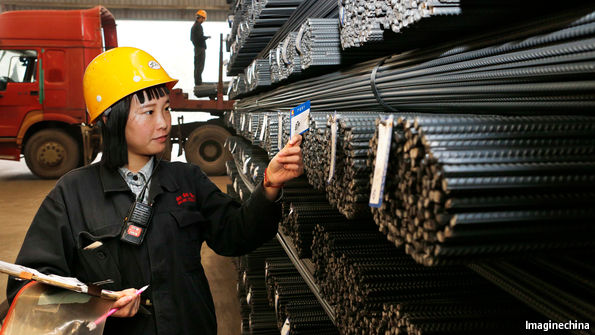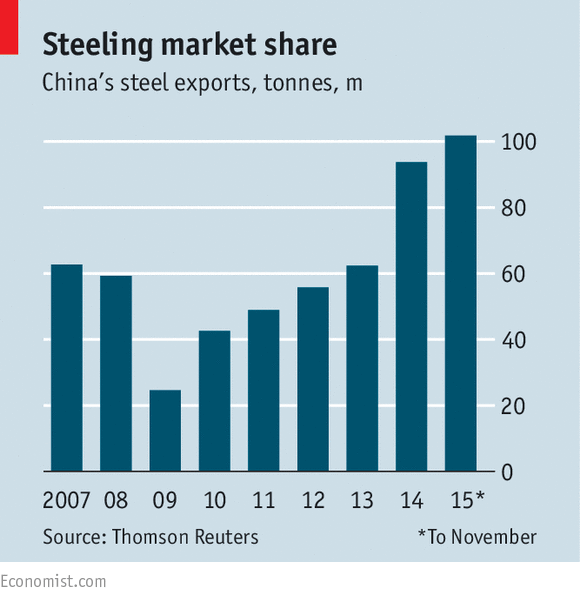China’s soaring steel exports may presage a trade war
As losses mount, Chinese steelmakers try to export their way out of trouble
| SHANGHAI | Business and finance

NOT so long ago, observers were agog at the sheer quantities of materials produced by China’s miracle economy. One newspaper reckoned that China had made more cement in two years than the United States did in the entire 20th century. But the days of double-digit economic growth are over, and many basic industries have ended up with massive overcapacity. As more and more of that spare capacity finds its way on to the world market, it looks likely to fuel a protectionist backlash.

The most striking case is steel. China produces roughly half of the world’s annual output of 1.6 billion tonnes. Analysts at UBS, an investment bank, reckon that this year it will produce 441m tonnes more than it will consume. With prices slumping, China’s 101 biggest steel firms lost some $11 billion during the first ten months of this year, according to one estimate, roughly twice what they made in profits last year. Unsurprisingly, they are seeking to export their unwanted product, even at a loss. Official data released this week confirm that China has, in the 11 months to November, exported over 100m tonnes of steel for the first time (see chart). China’s exports are now bigger than the total steel production of any country apart from Japan.
The American steel industry’s lobbyists have begun clamouring for action to stop what they consider illegal dumping of subsidised product. In Europe, an industry already suffering from cuts and closures is pushing the European Commission not to grant China “market economy” status, a legal designation that would make it harder to hold back the tide of Chinese imports.
Chinese officials are unbowed. President Xi Jinping, during his recent state visit to Britain, claimed that his country has already made big cuts in steelmaking capacity. On December 9th China threw more fuel on the fire by cutting export taxes on several types of steel. A trade war may be brewing, and steelmen are on the front lines.
No comments:
Post a Comment
Comments always welcome!